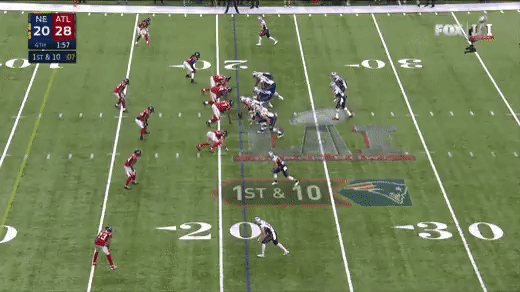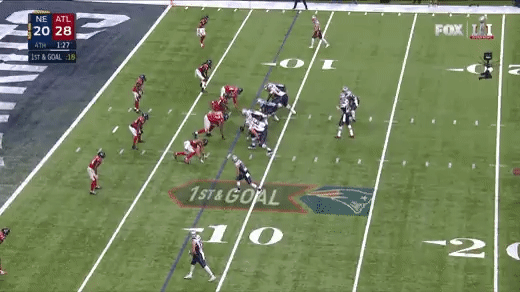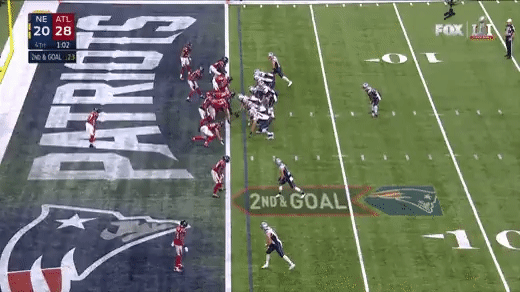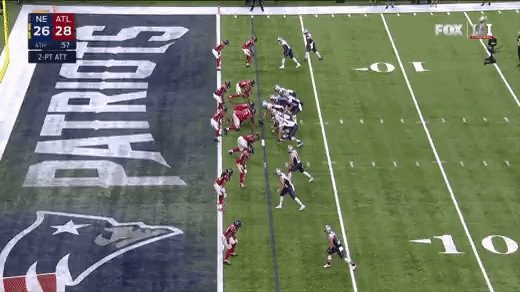I was recently discussing the quarterback battle at Texas A&M with an Aggie fan who’d love to see head coach Jimbo Fisher choose 5-star freshman Connor Weigman but is anticipating LSU transfer Max Johnson will likely get the nod.
I tend to think Johnson is nearly a lock. Guys who’ve successfully thrown for nearly 3,000 yards in the SEC West are typically pretty good and don’t transfer to schools where they don’t have an understanding with the head coach about some degree of likelihood they’ll play.
The question I asked though was, “who on the Aggies needs to have the ball for A&M to win games?”
The starting quarterback should, and probably will be, whomever is best at getting the ball to the best player in optimal position to make plays. Jimbo Fisher has tended to play the guy he trusts to do the job over young talent with upside.
A&M’s rival Texas has a head coach named Steve Sarkisian who also has a long career of developing successful quarterbacks. He likes to refer to the job of the signal caller as “the most important position in sports.” I think it’s a pretty solid summation, there’s another colloquial term for the position I think is more succinct and obviously relevant here on America’s War Game.
Field general.
Quarterback play is very poorly understood both by fans and commentators of the game because it’s extremely complicated. The reason this one player can have so much impact on a game has little to do with his athleticism, size, or ability although they all matter. It has to do with the degree of decision-making which is necessarily put on his plate.
Every play in football is a violent scrum with 22 actors and one of them needs to be able to see it all, process it all, and quickly make a decision while the biggest people on the field battle over the right to determine his health status for the next play.
In terms of college football, calm, poised decision-making under pressure and awareness of surroundings are hard to evaluate on high school film, virtually unscrutinized in the quarterback camps everyone celebrates (spare me arguments about their drills), and ultimately the essence of what makes a great quarterback. Even after watching college players in games it’s difficult to project which ones will translate to the professional level.
The right answer is the players who make the best field generals, deploying their teammates in the best positions to win the game.
Field generalship
My great-uncle (not really) Colonel John Boyd had a great concept within military strategy which also applies to any other competitive human activity and certainly to football. His concept was the OODA loop, a process which defines how we interact with our environment.
Observe
Orient
Decide
Act
Pretty simple. His big strategic suggestion was decentralized command which could allow an organization to cycle through the OODA loop faster than their competition. If all of the observations, re-orientation, decision, and action has to go through several levels of a command structure, it’s hard to move quickly and take advantage of opportunities or avoid emerging problems.
Conversely, a good quarterback empowered with lots of decision-making is the exact opposite. He can see things happening live and make plays a coaching staff could never see and communicate to their players in time.
In college this is often reflected in the scrambling, dual-threat quarterback. An easy way to get an advantage in cycling through your OODA loop faster than the opponent is to have a quarterback who can see a play breaking down, or a crease in the defense, and just run the ball himself.
At the NFL level, the highest version of this is guys like Peyton Manning or Tom Brady who could check plays at the line of scrimmage to get their offense into the optimal call before the snap.
Manning’s famous “Omaha” calls were a simple way for him to communicate which of the various options the team might run on that play to actually execute. They’d have two potential play calls and he’d use “Omaha” if he needed to quickly communicate to his teammates to run the “plan B” option because plan A wasn’t looking so good now Manning could see what the defense was up to.
Option football and option routes by receivers are also reflections of this same underlying principle. You want to be able to OODA as fast as possible to avoid disasters and seize opportunities as they emerge. The center who makes ideal line calls for his teammates in the blocking scheme, the receiver who runs sight adjustments or option routes in response to coverage, the Mike linebacker who sets the front for his teammates on defense, and the safety who sets coverages on the back end, they are all essential to this process.
There’s no position which has more power to make live adjustments for a football team than the quarterback. In addition to any protection or play audibles he may be entrusted with, he’s the one making a decision after the center hands him the ball on who gets it next.
Even if the coach has schemed up an easy read and quick throw, the quarterback still has to see it and make it happen and maybe he won’t. Sean McVay knows what I’m talking about.
No one else on the field is asked to make decisions after the snap with the actual ball in his hands. Everyone gets caught up in a quarterback’s ability to move with the ball or his ability to throw it but the mental side is much more important. This is why the NFL’s best quarterbacks these days are often guys playing deep into their 30s who’ve seen enough to be able to process and make decisions quickly.
Get it to your best player in the best possible position
Coaches routinely talk about building their offense around the skills of the quarterback. I myself have written here on how whether your quarterback was a dual-threat or not has a lot to do with who you should play at the tight end position in the spread offense. A running quarterback can help you even out the numbers in the box to run the ball without needing the tight end to be a good blocker. A passing quarterback is going to fare much better if the offense can check to a run (and use protections) which do ask the tight end to execute some blocks.
But what makes a quarterback is whether he can distribute the ball well and whether the players he’s getting the ball to are good. This is more true of passers than dual-threat quarterbacks, but even in quarterback run systems the guy who makes the best decisions is usually better than the superior athlete.
Tim Tebow wasn’t the most athletic running quarterback of all time and certainly not the best passer, but he was a good decision-maker and he was powerful and tough running between the tackles. That combination was rare and made Florida great.
But even Tebow was boosted by some really complementary skill sets and talents around him. As effective as he was running the ball downhill, it really helped the Gators to pair him with the game-changing speed of Percy Harvin, who could get the ball in a variety of ways which were conducive to the particular distribution skills of Tebow.
A dual-threat quarterback who struggles to throw the ball down the field doesn’t do a team with a deep threat much good. An elite pocket passer isn’t as much help to a zone-read team with lousy receivers. Percy Harvin could create explosive plays on hand-offs, option pitches, slants, or downfield play-action shots which all played to Tebow’s strengths. Calvin Johnson, the legendary downfield receiver, played in an offense at Georgia Tech with a poor passer where he was often wasted.
Physical gifts are often helpful to a quarterback yet routinely overinflated. The service rankings love a quarterback with wheels and a strong arm and those players do make offense in the spread pretty simple. If the quarterback can run zone-option and command defensive attention in the box but also hit a throw outside the far hash marks and command defensive attention there, it’s checkmate. At least on paper.
What if he can be easily confused into missing the opportunities or coughing up the ball? Then it’s all for naught. If he doesn’t have anyone who can reliably get open or bring down contested catches? You’d never know he was particularly good.
The ultimate field general
We all know the answer here, right?
One of my favorite explanations of Tom Brady’s greatness as a quarterback came from an internet troll.
For years Barry resisted the idea Tom Brady was even a great quarterback, much less the GREATEST quarterback.
But he kept winning.
There’s the key. We can evaluate quarterback play through efficiency, through wow plays and whether a guy makes throws or runs other guys simply can’t make, all of those are solid metrics. Measuring solely by wins is a pretty flawed measurement because the surrounding context is partly out of a player’s hands.
Yet wins are what matter. Championships. And if another player isn’t great because he didn’t have as good a context, then in a sense we’re just explaining “why” and not “whether” they were as “great.” Your goal on the field isn’t to make plays other guys can’t make, it’s not even to make the most efficient possible possible, your goal is to win the game. The way you win a game is by playing to your team’s strengths and attacking your opponents weaknesses.
Tom Brady is the absolute greatest at doing the opposite of what we expect from a team leader or a great player. It’s not about what he does with the ball it’s about how he willingly and effectively gives up the ball to try and maximize his TEAM’s positioning rather than his own.
Even though he’s one of the most celebrated athletes alive and the fact he was totally overlooked in the draft due to a lack of imposing physique or measurables, the components which make him such a dominant football player are surprisingly unexplored.
Check out his last three throws to tie the game against the Atlanta Falcons, complete the comeback from 28-3, and force overtime. Keep in mind these all came after he underthrew a ball to Julian Edelman which his receiver caught while falling down as the ball bounced off a Falcon’s legs.
Patriots motioned Edelman to 2x2 then ran 4-verts with some adjustments for the receivers. Atlanta drops their hook defender deep to protect the seam. They’re playing Cover 3 so the deep safety is vulnerable to receivers running up the hash marks to either side of him and Brady throwing to whichever guy he doesn’t cover.
Brady quickly hits the angle route to the RB down main street. There’ no one there, they’re worried about the comeback to Edelman or the seam getting hit by the tight end and no one’s on the running back.
The Patriots hurry to the line of scrimmage and do the exact same thing. Same motion with Edelman from 3x1 to 2x2, same 4-verts play, same quick toss to the running back. The strong hook defender tries to race over this time to stop the quick angle route by the back but he can’t get there in time. Game of inches and instants.
Brady knows what he’s getting before the snap, he’s seen it all in his head beforehand and now simply has to make sure after the snap of what he’s seen and throw a quick toss.
To score, the Patriots stay in hurry-up mode and run this fairly amusing play to finish the drive.
This is duo (power run) with Julian Edelman on the edge serving as a key blocker. Edelman is not a big dude, he does what he can here and it’s enough. The Falcons are worn down and have no time to adjust or get their bearings because of the Patriot tempo.
James White, a 5-foot-10, 205 pound running back who was in the game because of his receiving skills (demonstrated on the previous two plays), bowls over the Falcons for the (almost) game-tying touchdown. Not a power runner and not a power set, but the tempo and the fact the Patriots can adjust live and the Falcons are struggling to do likewise makes all the difference.
The Patriots aren’t even maximizing their own personnel here, they just know they have Atlanta on the run and are leaning into ways to exploit their weaknesses.
Now they need a two-point conversion. What do they ask of Brady, the GOAT, in order to execute in this huge moment?
The Falcons are obviously worried about the QB sneak, even from two yards out, so they have their linebackers sitting in the open gaps and ask them to bail on a pass to stop the slant.
The Patriots run basically a bubble screen. Quick throw to Danny Amendola on motion inside, hope you block well with Julian Edelman and Chris Hogan, and then Danny has to make sure he wins to the goal line.
There’s nothing super sexy here. To Barry’s point before he recanted, it’s Tom Brady executing a lot of the sort of throws which make people suspicious of college spread quarterbacks.
Of course Brady could make some more challenging throws as well, but it was his willingness to patiently and consistently take what defenses gave him which made the Patriots so hard to beat in the playoffs every year.
Combined with his ability to audible between play-calls and operate a HUNH spread (hurry-up, no-huddle) offense? It made him the ultimate field general. It’s not that fun for analysts to point at and it isn’t much fun for kids to imagine back home.
I don’t know about y’all but I didn’t grow up playing in my backyard like, “Boyd gets the snap, he quickly throws a check down! His back makes a guy miss…they win the Super Bowl!” In my imagination, a heroic quarterback held the ball beyond what his line could block and either made a ridiculous throw on the move or took it in himself.
Brady’s way doesn’t correspond to flashy traits you can see on highlights or evaluate easily in prospects.
But it wins games.
The quarterback is a field general, generalship is just leadership, and great leaders sacrifice and serve the people they lead.











As a long time student of the OODA Loop, it’s exciting to see it applied here. And it even gets curiouser and curiouser as you dive deeper.
OODA training teaches “getting inside your opponent’s OODA Loop”. Speed of seeing, processing and reacting (OODA) are obviously huge factors in elite QB play, as you point out. But timing is critical, too. You’re trying to catch your enemy on their half-beat. The best QBs are probably doing this.
This military piece explains it way better than I can:
https://thestrategybridge.org/the-bridge/2020/3/17/the-ooda-loop-and-the-half-beat
The line in your essay that caught my eye re Brady: “…but it was his willingness to patiently and consistently take what defenses gave him…”. The word 'patiently' is key, and recognizes Brady not only going through OODA fast, but timing it to his opponents’ loops and catching them on the half beat, patiently.
Very cool stuff, Ian. You and your "great-uncle" John really has us thinking here.
Makes me think Sam Ehlinger’s ability to execute OODA was dramatically underrated.